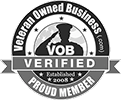Changing jobs can be an exciting time in life – but it also comes with a financial to-do list. Number 1 on that list is usually deciding what to do with your old 401(k) account. While a rollover is often the smart move, there’s more to consider than just transferring the funds.
1. Don’t Withdraw—Roll Over Directly
The biggest mistake you can make with a 401(k) when changing jobs is cashing it out. Not only would that trigger income taxes, but you could also face a 10% early withdrawal penalty if you’re under the age of 59½.
Instead, opt for a direct rollover, where your 401(k) funds are transferred straight into an IRA or your new employer’s 401(k). This avoids tax consequences and keeps your retirement savings growing uninterrupted.
2. Don’t Just Roll It Over—Invest It!
It can be easy to stop at the rollover and forget the next critical step: investing the funds. According to a Vanguard study, 28% of rollover IRAs remained entirely in cash even seven years after the rollover. That’s a huge opportunity cost.
Let’s say you rolled over $100,000 and left it in cash for 7 years. If the market averaged a 7% annual return, you could be missing out on over $70,000 in gains. Always make sure your rollover IRA is properly invested to align with your retirement goals.
3. IRA vs. 401(k): Which Is Better?
Rolling your old 401(k) into an IRA has some advantages:
• Lower fees: IRAs often come with fewer administrative costs.
• More investment options: 401(k)s are usually limited to a set menu of funds, whereas IRAs offer access to thousands of mutual funds, ETFs, and individual securities.
That said, some people may prefer rolling their old 401(k) into a new employer’s plan—especially if they’re considering strategies like the backdoor Roth IRA, which requires no traditional IRA balances.
4. Considering a Roth Conversion?
If you’re rolling your 401(k) into a traditional IRA, you might consider converting some or all of it to a Roth IRA. Roth conversions can be powerful, especially in years when your income is lower. You’ll pay taxes on the converted amount now, but future withdrawals will be tax-free.
A Roth conversion isn’t for everyone—it depends on your tax bracket, time horizon, and retirement income strategy. It’s worth discussing with one of Trajan Wealth’s Fiduciary Advisors.
5. Need the Money? Know Your Early Withdrawal Options
Ideally, retirement funds stay untouched until retirement. But life happens. If you absolutely must access your 401(k) early, there are some exceptions:
• Hardship distributions: For qualified hardships, like medical expenses or buying a first home.
• Rule 72(t): This IRS rule allows you to take “substantially equal periodic payments” without penalty, though once you start, you must continue for at least five years or until age 59½.
These options should be last resorts, but it’s helpful to know they exist.
In Summary
Rolling over a 401(k) is more than a transfer—it’s a chance to reassess your retirement strategy. Direct rollovers protect your savings from taxes, but don’t stop there. Invest the funds, weigh the pros and cons of IRAs vs. 401(k)s, consider Roth opportunities, and understand your options if you need access to your money early.
And if you’re feeling overwhelmed? Trajan Wealth can help!
The decisions you make today can have a big impact on your retirement tomorrow.


